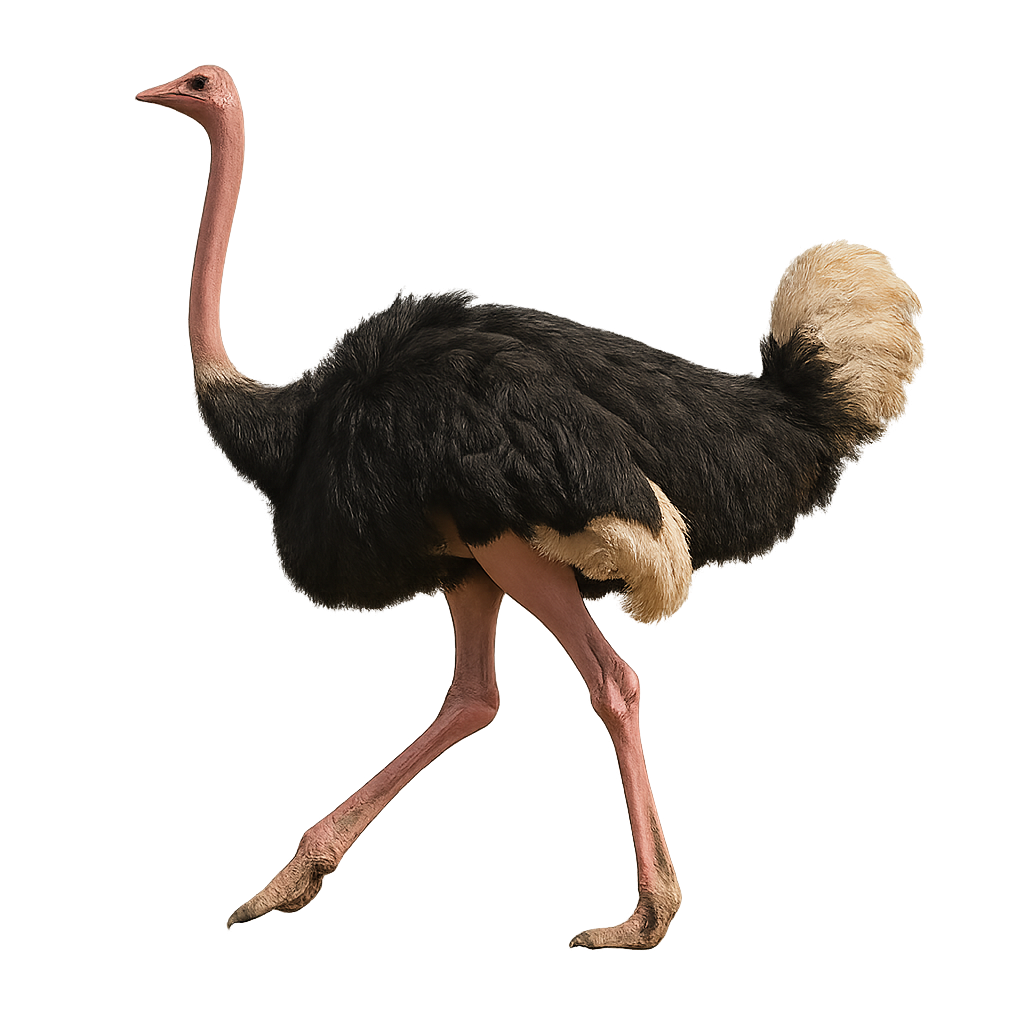Your wildlife photography guide.
Explore the ostrich in detail, study its behavior, prepare your shots.
Where to observe and photograph the ostrich in the wild
Learn where and when to spot the ostrich in the wild, how to identify the species based on distinctive features, and what natural environments it inhabits. The WildlifePhotographer app offers tailored photography tips that reflect the ostrich’s behavior, helping you capture better wildlife images. Explore the full species profile for key information including description, habitat, active periods, and approach techniques.
Ostrich
Scientific name: Struthio molybdophanes

IUCN Status: Least Concern
Family: STRUTHIONIDAE
Group: Birds
Sensitivity to human approach: Shy
Minimum approach distance: 50 m
Courtship display: February to March
Incubation: 42–46 jours
Hatchings: March to April
Habitat:
Savannas, deserts, and arid zones of sub-Saharan Africa, also found in parts of the Middle East
Activity period :
Primarily active during the day, with peak activity in the morning and late afternoon.
Identification and description:
The Ostrich is the largest living bird on Earth, known for its impressive size and powerful long legs that allow it to run at remarkable speeds, reaching up to 70 km/h. Native to Africa, the Ostrich inhabits savannas and desert regions, where it primarily feeds on plants, seeds, and small insects. Although it cannot fly, its wings and plumage help it maintain balance and protect itself from the sun.
The Ostrich is a social bird, living in groups and known for its interesting defense behaviors. When threatened, it can run at high speeds to flee or crouch to blend into the ground, a method that helps it escape predators.
Recommended lens:
300 mm – adjust based on distance, desired framing (portrait or habitat), and approach conditions.
Photography tips:
Use a telephoto lens to photograph the ostrich, especially when it is running or moving through the savanna. The soft light of the morning or evening is ideal for capturing its distinctive features and natural behavior. Be discreet and respect their space, as they can be sensitive to disturbances, especially during the breeding season.
The WildlifePhotographer App is coming soon!
Be the first to explore the best nature spots, track rutting seasons, log your observations, and observe more wildlife.
Already 1 430 wildlife lovers subscribed worldwide

